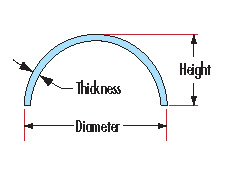Currently, there are some problems with fruit tree fertilization. For example, the fertilization position is not determined according to the distribution of root system; some fruit farmers think that the more fertilizer application, the better the effect; the fertilization time depends on the busyness of farming; the fertilization type is arranged at random, only pay attention to a large number of elements, neglecting trace elements; Wait. How can we make the orchard fertilization more reasonable?
Fertilization should be suitable for the distance and depth of the trunk. The horizontal root distribution of the fruit tree is mostly 2- to 4 times of the crown diameter, so it is usually at the outer edge of the vertical projection of the canopy (except for the orchard or the closed orchard). The depth of fertilization is determined by the age of the tree, the soil condition, and the depth of the root distribution; the depth of the base fertilizer is generally 30-80 cm. The closer to the trunk, the shallower the fertilization ditch. Shiji Feigou (hole) should be deep, and the topdressing should be deep (10-15 cm).
The amount of fertilizer applied depends on the tree, soil, and fertilizer. The older the tree, the more fertilization; the garden with poor soil fertility should be applied more, the fertile garden should be less applied; the weak tree should be applied more, the strong tree should be less applied; if there are more trees, more trees should be less. The amount of fertilizer applied is applied in a ratio of 1.5--2 kg of base fertilizer per 1 kg of fruit produced. Generally, the application of manure is not less than 5,000 kg, but the application of chicken manure should not exceed 4,000 kg. Such as lack of basic fertilizer, topdressing fertilizer several times.
The amount should also be determined by the age of the tree, soil fertility, tree potential, fruit amount, and so on.
The fertilization period depends on the tree. The base fertilizer should be applied from the beginning of September to the end of October, and the better the Yuechang, the better the root regeneration and the fertilizer effect; the top dressing should be applied in the case of pre-emergence and flowering period. The external top dressing period can be combined with spraying and spraying, or single spraying, such as boron fertilizer in the flowering period, nitrogen fertilizer in the early growth stage, and phosphorus and potassium fertilizer in the middle and late stages.
Choose the right fertilizer. For example, organic fertilizer should be selected from already decomposed fertilizer. Fertilizers should be selected from NPK and some trace elements (boron, iron, zinc, calcium, etc.) needed. That is, which element is missing from the tree, which element is applied, and the nitrogen fertilizer should use ammonia nitrogen and urea as much as possible. The chemical fertilizer must be a state-approved fertilizer with trademark registration.
The fertilization method is flexible. Should be based on ground fertilization (base fertilizer topdressing), supplemented by tree spray fertilizer (micro-fertilizer, etc.). In recent years, the rise of trunk fertilizer (amino acid compound micro-fertilizer, certain nutrients) or injection, infusion and fertilization, depending on the specific circumstances. For example, calcium fertilizer, because calcium is difficult to operate in the tree, after the fruit is bagged, the amount of calcium entering the fruit is significantly reduced, and the fruit is severely deficient in calcium; the tree is sprayed, because of the paper bag and the film bag, it is difficult to make calcium. During this time, it is more effective to use the branches, infusion, infusion and injection to supplement calcium. The common deficiency of iron or zinc in fruit trees can also be solved by the same method.
We are manufacturing high transmission and durability domes. BK7 or HK9L Glass domes are often used in meteorology applications. Fused silica domes are commonly used in underwater applications at extreme environments. Other application for our dome include meteorology applications, pyranometers, defence applications and as high pressure view ports in underwater cameras and submersibles.

Material:Optical glass N-BK7 , H-K9L, UV Fused Silica, Sapphire, and infrared crystal materials.
Diameter:20-350mm
Diameter Tolerance:+/-0.1mm
Thickness:>2mm
Thickness Tolerance±0.2~0.1mm
Center Deviation:3-5'
Surface quality:80/50 60/40
Coating: Antireflection Coating inside
Chamfers:0.2 x 45° typical
Hemisphere Dome Lens,Hemispheric Glass Domes Lens,Optical Glass Hemisphere Domes Lens,120 Mm Diameter Glass Dome Lens
China Star Optics Technology Co.,Ltd. , https://www.realpoooptics.com